After we completed our adventure in Avignon and Saint Remy, we needed a direction to go. Having received several recommendations from friends to visit the New Aquitaine region and more specifically to visit cave paintings, we headed for Sarlot in the Perigord area close to the Dordogne River. Spring weather, however, changed our days in the Dordogne Region to garden adventures instead of caves as the Lascaux caves have been carefully reproduced for touring, but the actual caves are closed to protect them and the small tram that allows visitors to view the actual painted walls at Rouffignac does not start up until April we shifted gears and went to two different gardens. No regrets.
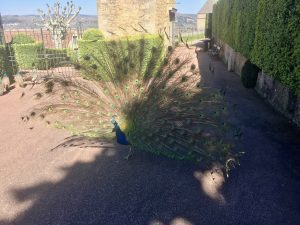
Marqueyssac gardens perched on sandstone cliffs above the fertile valley of the Dordogne overlooks
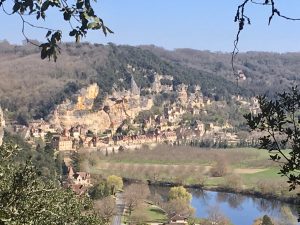
Beynac castle, Fayrac and Castelnaud and was abloom with fruit trees and green fields. Six kilometers of shaded walks are lined with 150,000 boxwood trees and rockeries.
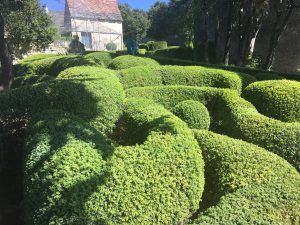
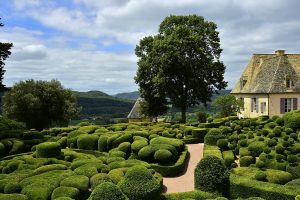
The topiary art maintained by 5 gardeners by hand offers surrealistic mounds and mazes as well as “stone blocks” near the mansion.
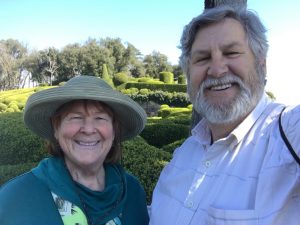

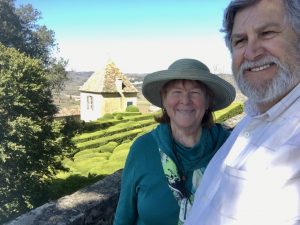
The Holm oaks, often limned in moss and lichen, are dark foliaged, and are the reason this is called Perigord Noir.
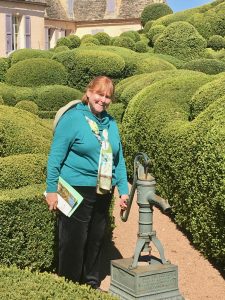
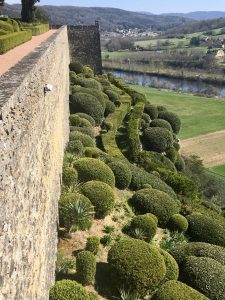
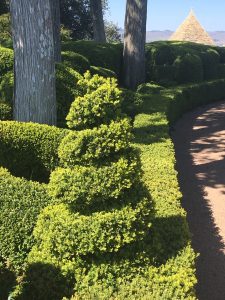
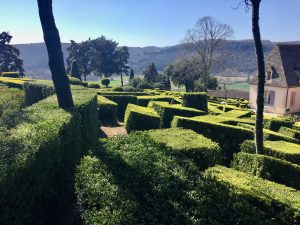
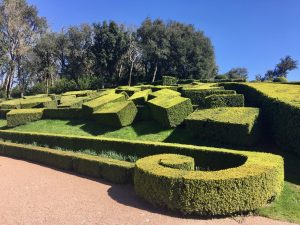
Returning to Sarlat, center of Perigord Noir, we dined on duck, foie gras, confit, grilled duck breast, and strolled past multiple shops with shelves lined with goose liver. One of the things David had wanted to do was visit a geese farm – alas we couldn’t find any that were open and had an English tour – darn.
When a second day of warm spring weather, blue skies and sunshine greeted us, David wound his way across the back roads of Perigord Noir to Eyrignac Gardens,
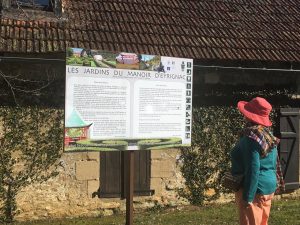
privately owned estate for 22 generations. Bright green carpets of lawn are edged with gravel paths to let one wander the 200-hectare estate viewing 6 gardens.
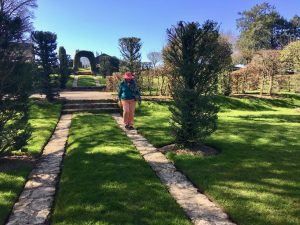
The defining walkway of yew and hornbeam pruned into architectural shapes was in “recovery” mode.
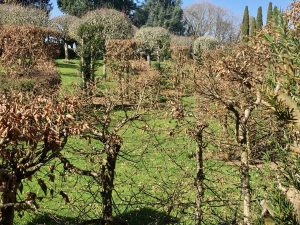
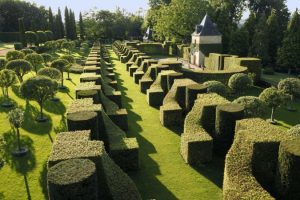
It required a postcard to in vision.

Formal French gardens are adorned with topiary, benches set in meditative alcoves, and 17th century water features.
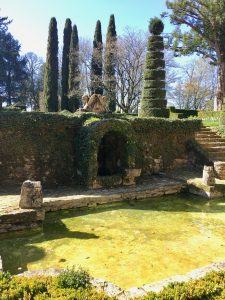
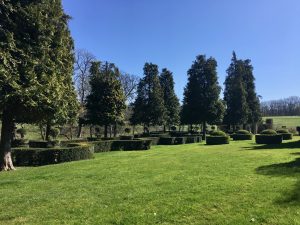
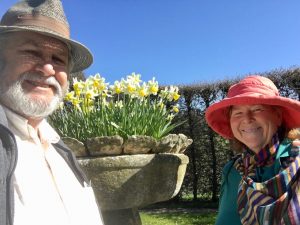
Italian influence is also viewed down an arcade of terra cotta planters and overlooking this arcade, a small English “natural” garden that leads to the family chapel.

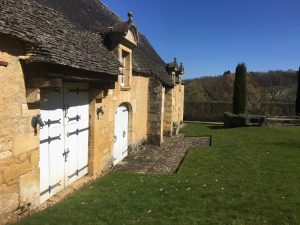
The White Garden, newest of developments, is entered through a crimson Tori gate and graced with multiple fountains, including bronze frogs.
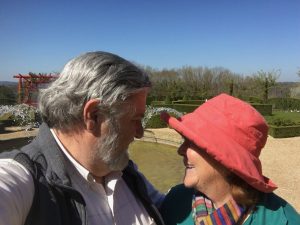

Seasonal hyacinth, tulips and narcissus defined spring White. Red viewing benches overlook the topiary farmyard, espalier orchard in process, and four meadows: wildflowers, grape varietals, decorative grasses, and “roaming square” being planted.
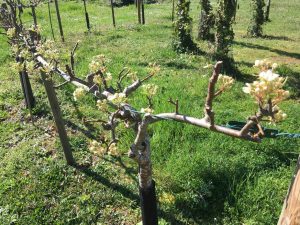
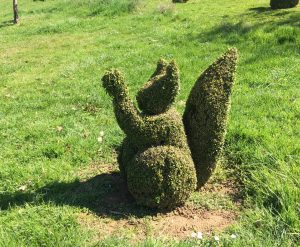
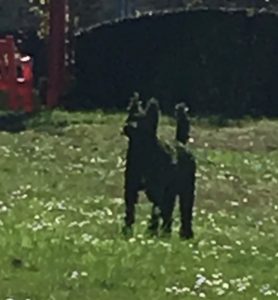
Both of these gardens were a joy to visit and we had them virtually ours to explore without anyone around. There “might” have been 3 other couples in the garden while we explored.
While we didn’t get to either of the historic caves, we certainly had a wonderful time staying in Sarlat and venturing out to the surrounding villages.